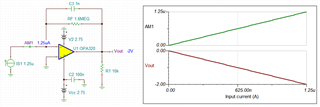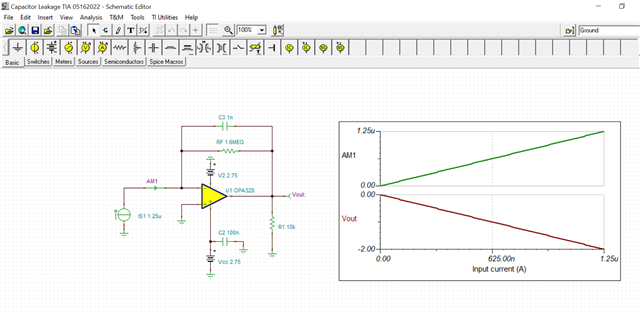Other Parts Discussed in Thread: INA283, TINA-TI
Hi, I need to use this circuit INA823 for nA current measurement, could I be recommended values for R1/R2/R3 for 0-1250nA measurement with 1nA-10nA accuracy if possible?
I would like the 0-1250nA current to translate to output voltage 0-2V. Can the INA823DT do this?



